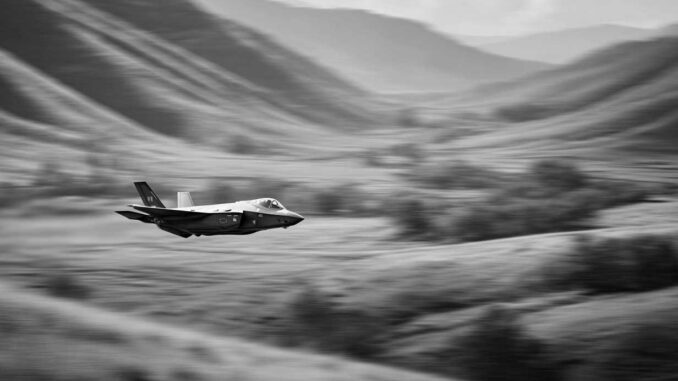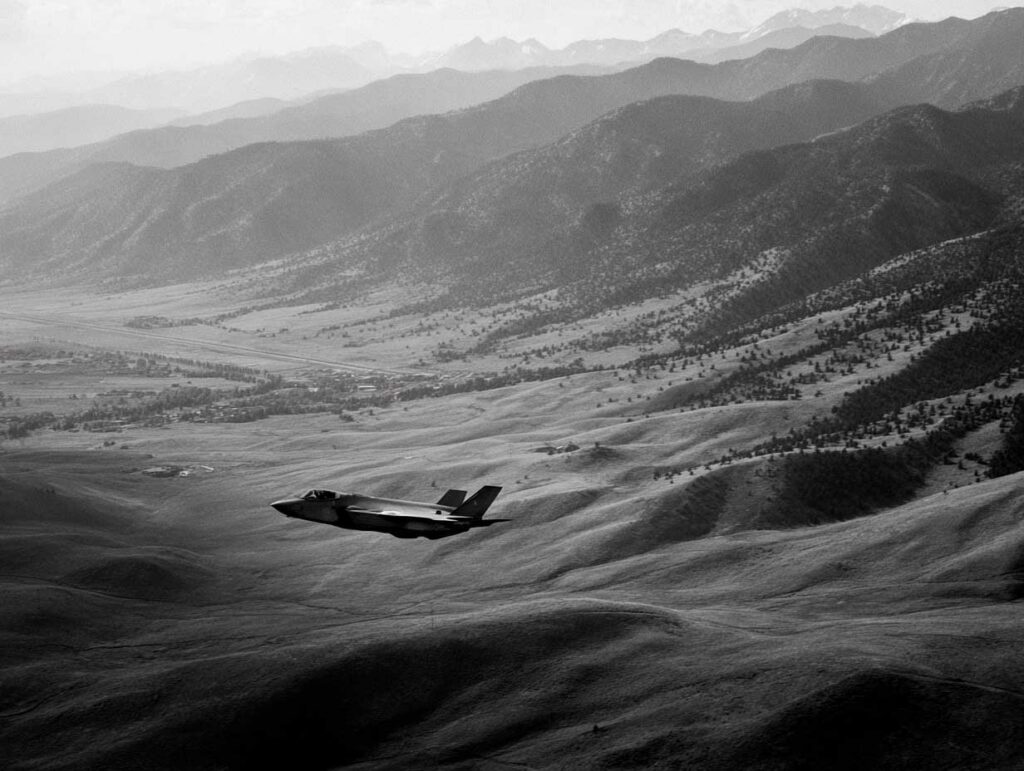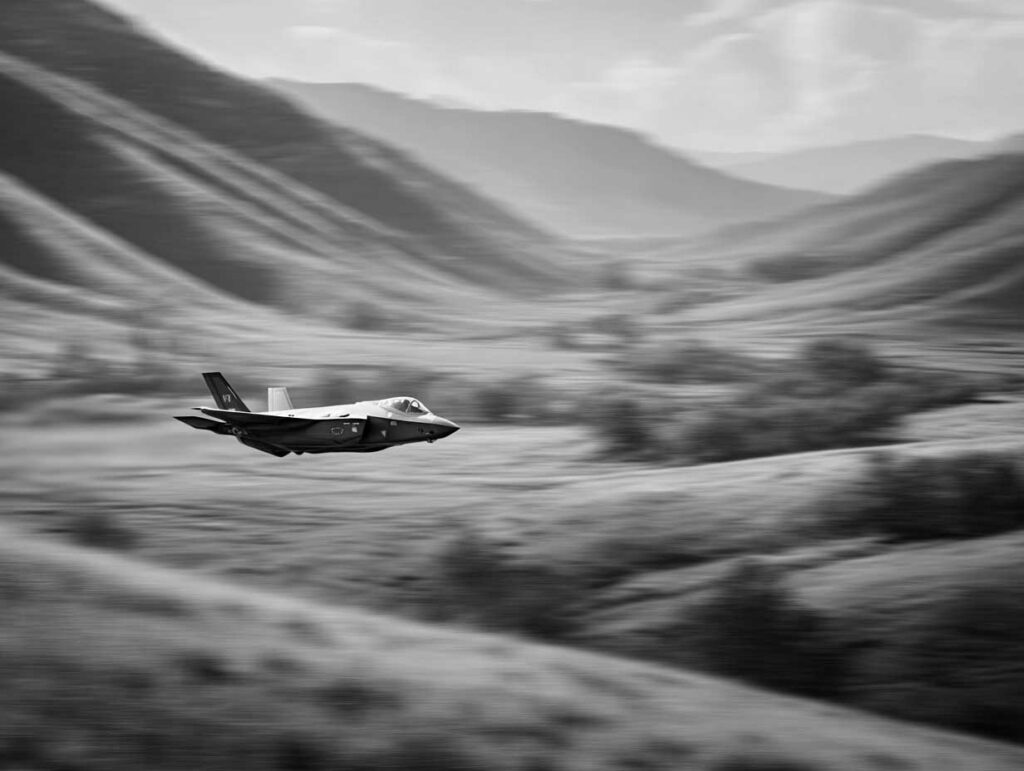
Discover the F-35 pilot experience, helmet display, simulator training, and cockpit systems designed to enhance situational awareness.
Flying the F-35 Lightning II involves a unique combination of high-performance handling, sensor fusion, and immersive pilot systems. Central to the experience is the advanced helmet-mounted display system (HMDS), which projects all mission-critical data directly onto the pilot’s visor, eliminating the need for a traditional Head-Up Display. Simulator-based training plays a major role in preparing F-35 pilots, reducing flight hours needed for qualification and minimizing operational risks. The cockpit interface is fully digital, designed around a single large touchscreen and voice-command capabilities. Coupled with sensor fusion and automated threat detection, these systems offer a level of situational awareness unmatched by legacy fighters.

Flying the F-35: Inside the Pilot Experience and Training Pipeline
The F-35 Lightning II is not just another fighter; it represents a paradigm shift in the pilot-machine interface. From the cockpit layout to the training process, each element of the F-35 program has been designed to minimize pilot workload while maximizing situational awareness, survivability, and lethality.
The Helmet-Mounted Display System (HMDS)
The F-35 HMDS, developed by Collins Aerospace and Elbit Systems, replaces the traditional Head-Up Display (HUD) with a fully integrated system that projects flight data directly onto the pilot’s visor. The helmet weighs approximately 2.3 kg and is tailored to each pilot’s cranial measurements using 3D scans. This customization ensures correct alignment of the symbology and camera imagery.
The HMDS receives data from the Distributed Aperture System (DAS), which uses six infrared cameras mounted around the aircraft to give the pilot 360-degree real-time vision. This allows the pilot to “see through the aircraft” by projecting video imagery onto the helmet visor, a capability especially useful during night missions, close air support, or air-to-air engagements.
Key symbology such as airspeed, altitude, artificial horizon, targeting data, weapon status, and threat indications are all visible in the helmet, aligned with the pilot’s line of sight. The Helmet Tracker System also enables weapon cueing, allowing pilots to lock onto targets simply by looking at them.
Digital Cockpit and Pilot Interface
The F-35 cockpit eliminates most physical switches and dials. The primary interface is a 20-inch panoramic touchscreen display, divided into configurable zones. This screen provides access to flight management, mission systems, radar, stores management, and navigation, all via touch or voice commands.
There is no Head-Up Display or traditional backup gauges. Redundancy is digital and distributed across Mission Data Files and Integrated Core Processors, which manage the sensor fusion engine. The system combines input from the AESA radar (AN/APG-81), DAS, EO-DAS, targeting pods, and electronic warfare sensors to provide a single coherent picture of the battlespace.
The pilot control stick and throttle (HOTAS) are designed for minimal movement, allowing weapon release, sensor slewing, communications, and navigation without hands leaving the controls. This arrangement reduces cognitive load and increases reaction speed in high-G environments.
Sensor Fusion and Situational Awareness
The mission systems architecture integrates data into a single tactical display. Threats are color-coded by type and priority. The system classifies airborne and surface threats, identifies friend or foe, and recommends responses. This fusion allows the pilot to process more information in less time, crucial during dynamic combat scenarios.
The AN/ASQ-239 Electronic Warfare suite and Multi-function Advanced Data Link (MADL) further enhance situational awareness, sharing classified data across the network with other F-35s and 4th-gen aircraft in real-time.
Training Pipeline and Simulation
F-35 pilot training relies heavily on simulator-based learning, reducing the need for costly flight hours in actual aircraft. The Full Mission Simulator (FMS) provides a 360-degree immersive dome with high-fidelity flight physics, sensor behavior, and threat environments.
Training is divided into Academic, Simulator, and Live Flight phases. Pilots begin with approximately 100 hours of ground training, followed by 50–60 simulator hours before their first flight. The simulation includes Electronic Warfare scenarios, air refueling, carrier landing for Navy pilots, and emergency procedures.
The U.S. Air Force’s Pilot Training Next initiative incorporates Virtual Reality headsets, AI-driven debriefing tools, and biometric monitoring to tailor training to each pilot’s learning profile. These tools accelerate proficiency and reduce costs.
The Autonomic Logistics Information System (ALIS) and its successor Operational Data Integrated Network (ODIN) also play a role in training by providing predictive maintenance data and mission analytics, which are used for post-sortie debriefing and mission rehearsal.

Human Factors and Cognitive Load
Cockpit ergonomics in the F-35 have been refined through pilot feedback and human factors studies. Voice commands, minimal switchology, and intuitive interface layout reduce cognitive load during complex missions. The pilot sits at a 13-degree recline, improving G-tolerance and visibility while reducing fatigue.
The life support system, which integrates Onboard Oxygen Generation, thermal regulation, and anti-G systems, is embedded within the pilot’s Gen III flight suit. These systems work in tandem with the aircraft’s environmental control system to maintain operational efficiency under all flight profiles.
The F-35’s pilot experience reflects a shift toward data-centric warfare. The helmet, the fused sensors, the training methodology, and the intuitive interface combine to offload routine tasks, allowing pilots to focus on mission execution. Unlike legacy aircraft where the pilot manages systems, the F-35 is designed for system-managed pilots, enhancing decision-making under pressure. For both aviation engineers and experienced aviators, the F-35 offers a glimpse into the next generation of human-machine integration in combat aviation.
War Wings Daily is an independant magazine.